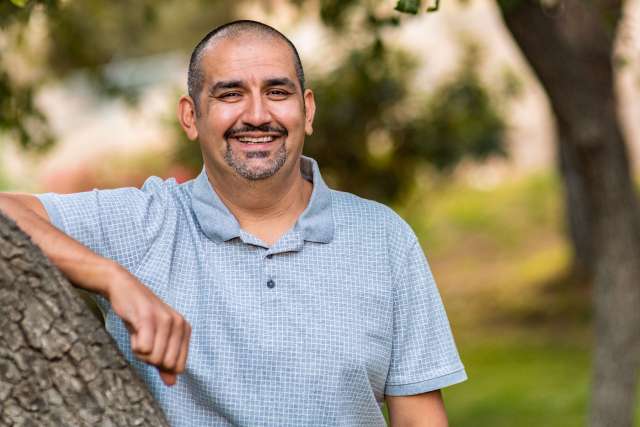IN 2019, AFTER the cancer in Lazaro Barajas’ colon spread to other organs and he progressed through chemotherapy options, doctors at UCLA Health deemed him a candidate for standard immunotherapy. It seemed to be working until, a few months later, his stage 4 metastatic colorectal cancer developed resistance to the drugs. Three years later, a clinical trial testing the safety and efficacy of a novel combination immunotherapy has, along with a unique type of precision radiotherapy, given the 43-year-old a new lease on life.
“When he no longer responded to traditional immunotherapy, there was a significant worry that nothing was left for him,” says Sidharth R. Anand, MD (FEL ’19), assistant professor of hematology-oncology. Dr. Anand is co-investigator on the trial, which is led by Zev A. Wainberg, MD (FEL ’06), co-director of the UCLA GI oncology program.
When some tumor cell proteins bind with T-cell proteins, they act as “brakes” on the immune system and prevent it from recognizing the cancer cells as dangerous threats. Immunotherapy drugs, or checkpoint inhibitors, work by blocking that binding. UCLA Health doctors put Barajas in a clinical trial that would test the experimental drug tiragolumab, a monoclonal antibody, in combination with atezolizumab, which already was approved by the U.S. Food and Drug Administration to treat certain types of cancers. By inhibiting two different “brakes” in the immune system, this pair of drugs work together to turn the body’s surveillance system back on.
While the experimental immunotherapy succeeded in controlling Barajas’ cancer, the patient faced a setback in 2021 when scans showed cancer progression at some lymph nodes near the left groin and left pelvic region. His oncology team referred Barajas to Michael Xiang, MD, PhD, a radiation oncology specialist and medical director of Santa Clarita Radiation Oncology. As a kind of “spot treatment,” Dr. Xiang used stereotactic body radiation therapy (SBRT), which delivers high doses of radiation to a highly targeted area in a few sessions. He and his radiation oncology team were able to offer Barajas adaptive radiation therapy, which gives radiation oncologists a real-time view into the human body to adapt to the patient’s changing anatomy with high precision.
After adaptive SBRT treatment, scans showed the tumor areas in Barajas’ pelvis had decreased in size, demonstrating a good response to radiation. Also, his tumor marker, called CEA, which had been elevated and rising prior to treatment, returned to the normal range. Barajas has continued in the clinical trial, which is keeping his overall disease in check.
— Lauren Ingeno







